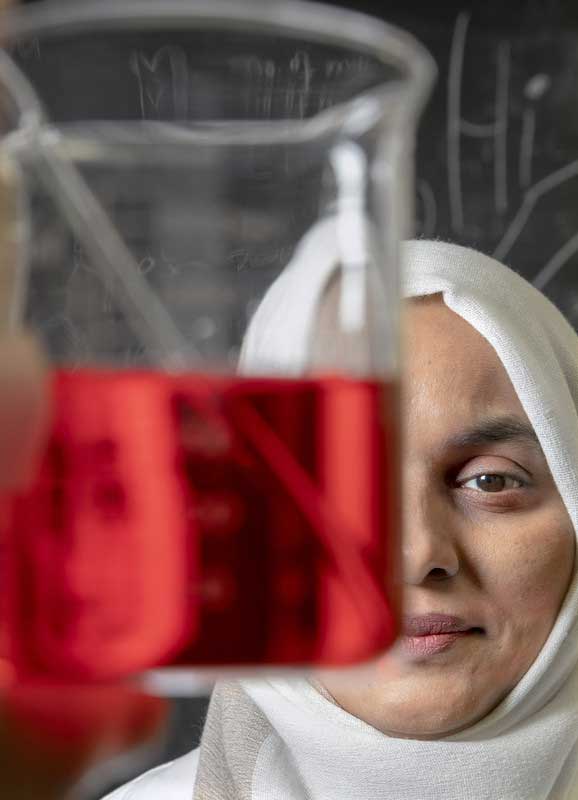UA Little Rock professor receives 188k grant to research new methods to create optoelectronic materials
A chemistry professor at the University of Arkansas at Little Rock has received $188,863 from the National Science Foundation to study experimental methods of developing organic optoelectronic materials.
Dr. Noureen Siraj, assistant professor of analytical and physical chemistry, will work with the Center of Organic Photonics and Electronics at the Georgia Institute of Technology to characterize new materials developed at UA Little Rock that possess Förster Resonance Energy Transfer (FRET) characteristics. FRET is a radiation-free energy transfer process between chemical compounds.
Optoelectronics is the study and application of electronic devices and systems that source, detect, and control light. Organic optoelectronic materials created and stabilized using the FRET method can create electronic devices that emit and detect light, such as X-ray machines, solar cells, light bulbs, LED lights, and even a photodynamic cancer therapy.
“We are proposing a new strategy to develop FRET-based organic materials,” Siraj said. “These materials are sometimes very costly and involve multisteps synthesis. Our simple strategy can drop this cost significantly because we can prepare these materials in a single step. Additionally, our method will produce organic compounds with high thermal stability. To achieve high thermal stability in organic compounds was very challenging from previously reported approaches.”
The grant, “RII Track-4: Synthesis, Characterization and Applications of FRET based Ionic Materials,” runs from Oct. 1, 2018, to Sept. 30, 2020.
Siraj and her graduate assistant, Samantha Macchi, a doctoral student studying materials applications, will conduct research at the Georgia Institute of Technology during the summers of 2019 and 2020 to learn about modern thin film and device fabrication equipment. The Center of Organic Photonics and Electronics is a premier research center that specializes in electronic devices and flexible solar cells for information technology, telecommunications, and defense sectors.
Siraj is excited to apply the knowledge she gains to her work at UA Little Rock and teach students about these new methods.
“This training will offer me an opportunity to establish an outstanding and first-of-its-kind research group at UA Little Rock and the state of Arkansas,” Siraj said. “Students and STEM faculty at UA Little Rock will receive tremendous benefits from these facilities, since most of the professors in chemistry, physics, and engineering departments at UA Little Rock are involved in materials science research. It will also give a great opportunity to students at UA Little Rock because they will be able to make optoelectronic materials.”
Siraj, who also mentors high school students, plans to let her current high school researchers get some real-world experience by participating in the research by performing small tasks that will “give them an idea of natural materials around us that can be used for different applications.”
Siraj joined UA Little Rock in 2016, after earning her Ph.D. in electrochemistry from Graz University of Technology. She teaches general chemistry, analytical chemistry, and physical chemistry of life sciences. Siraj also holds a Bachelor of Science degree in chemistry and Master of Science degree in physical chemistry from the University of Karachi.
In the upper right photo, Noureen Siraj works in her chemistry lab to synthesize materials that can be used in optoelectronics research. Photo by Ben Krain.
Project is sponsored by the National Science Foundation under Award Number 1833004. Any opinions, findings, and conclusions or recommendations expressed in this material are those of the author(s) and do not necessarily reflect the views of the National Science Foundation.
